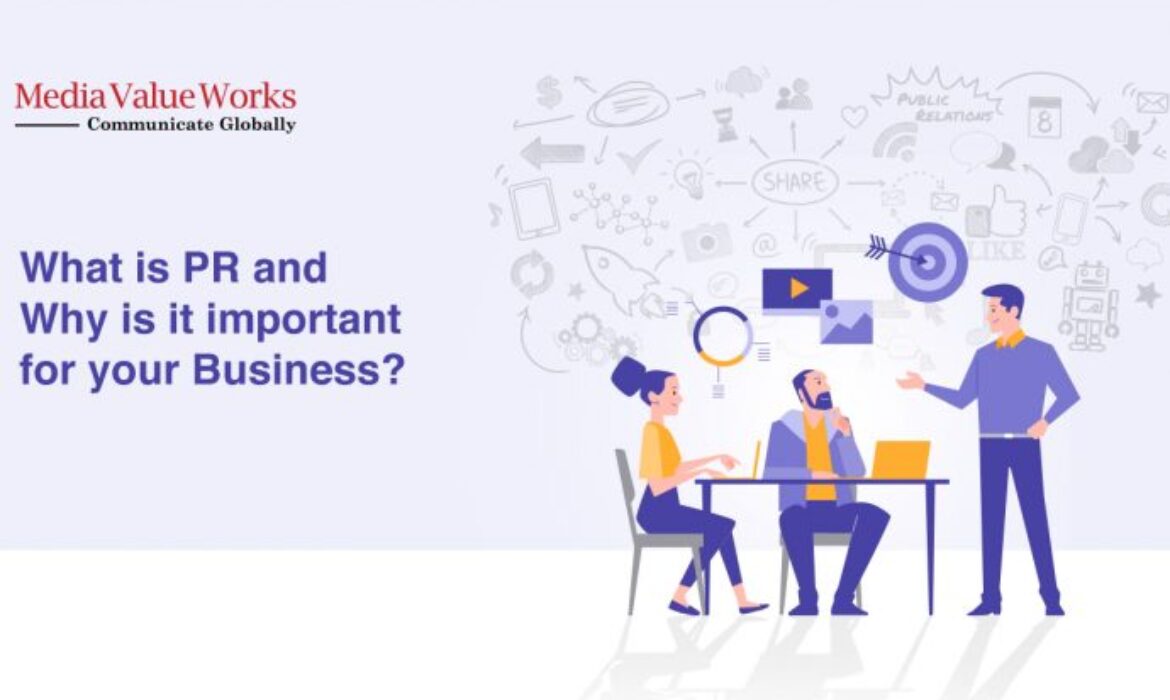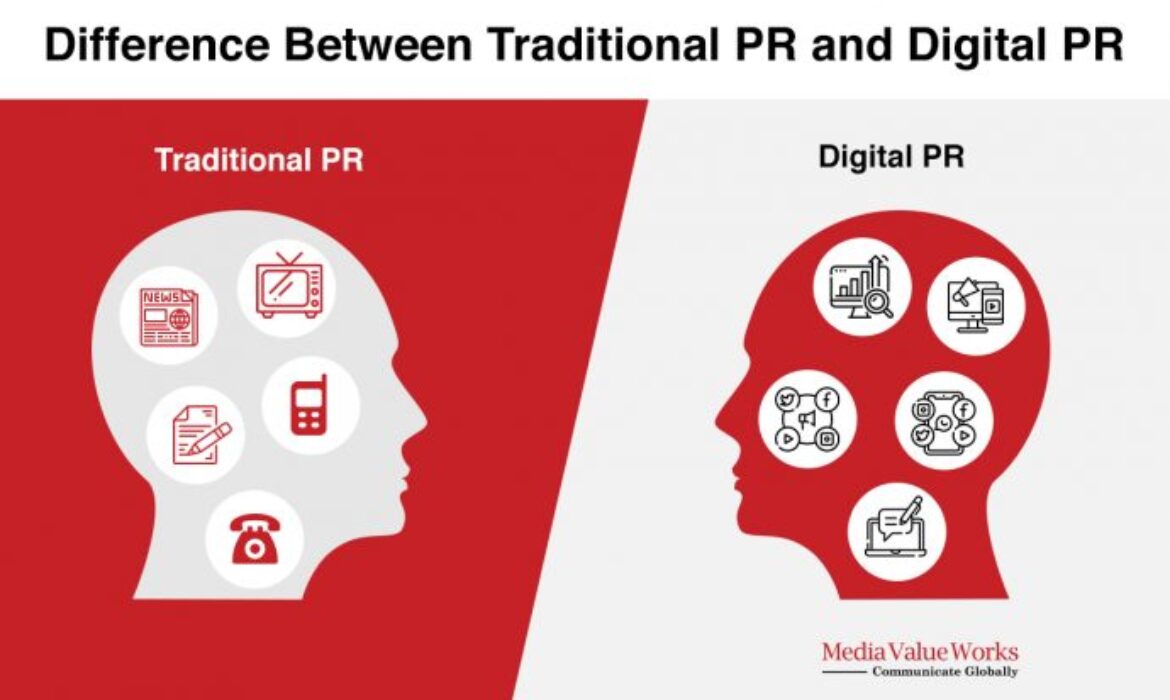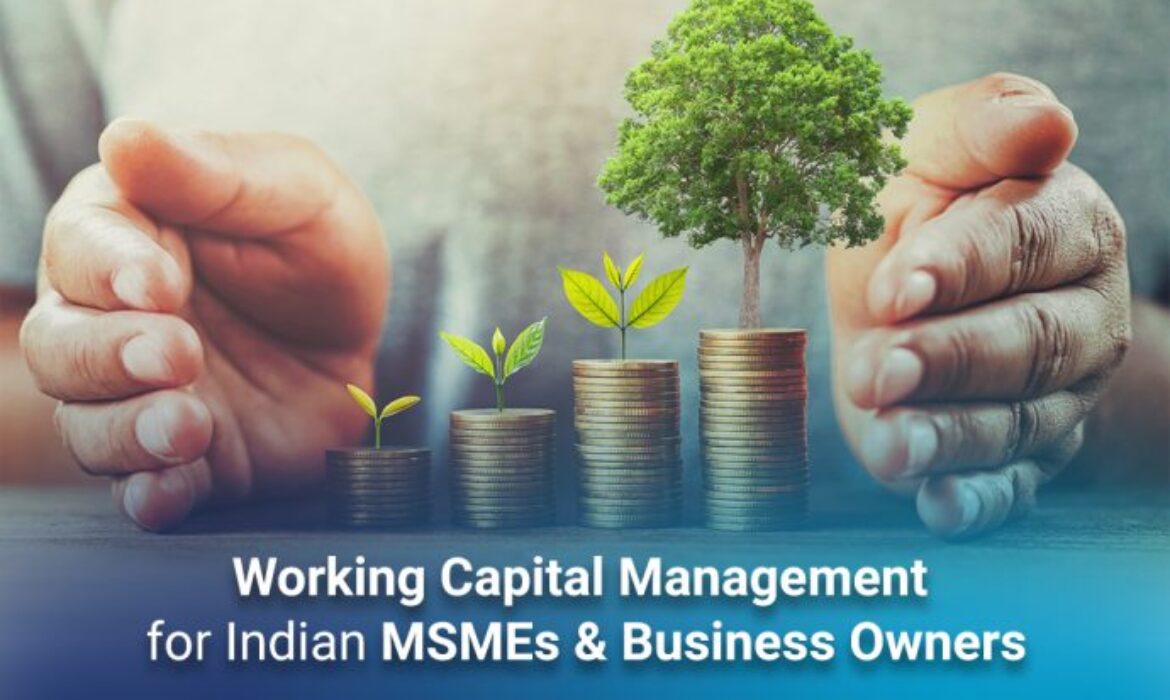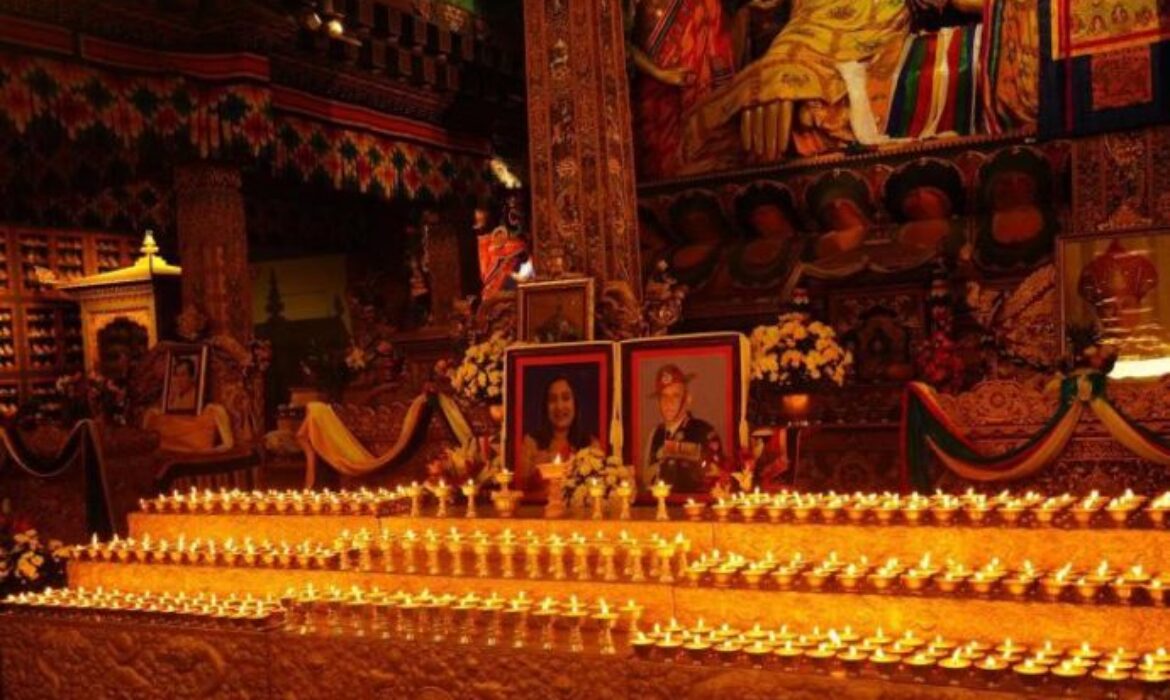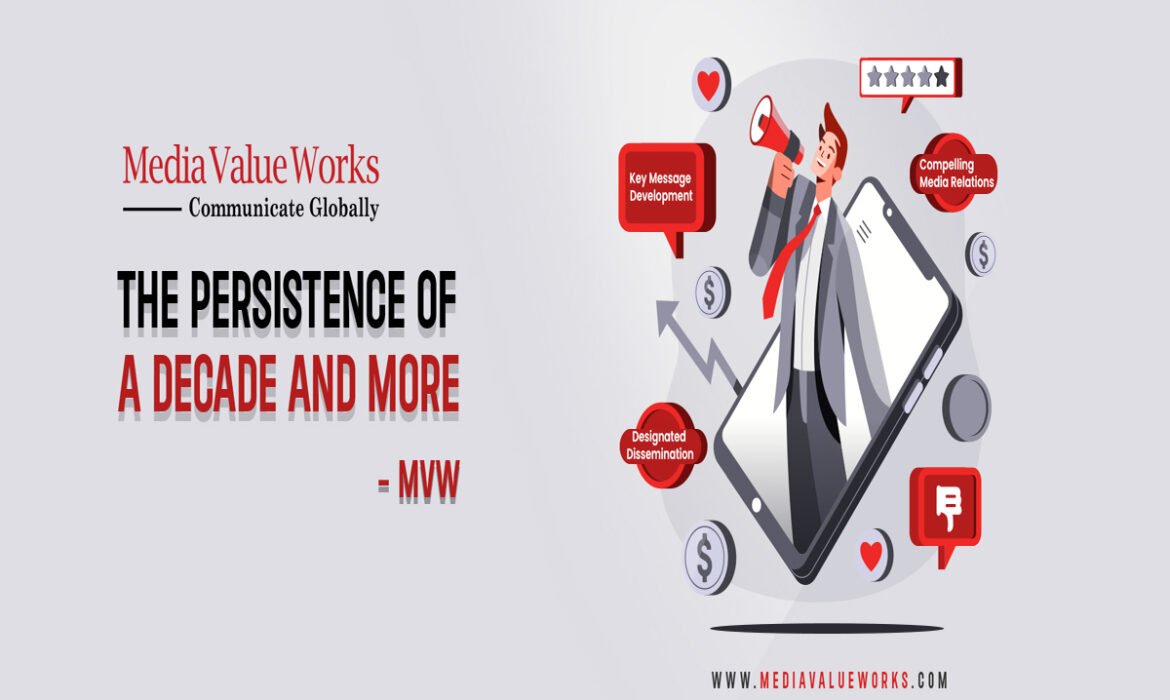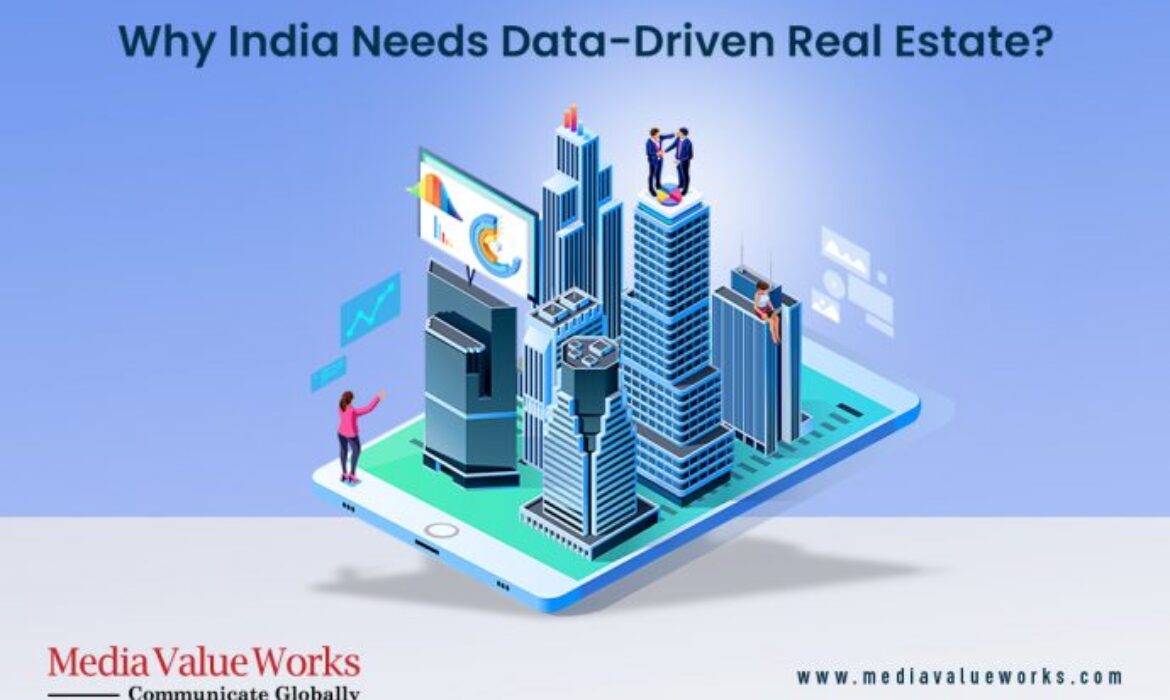What is PR and Why is it Important for your Business?
What is Public Relations(PR)?
Public relations is about managing and publicizing information on behalf of an individual or an organization to the target audience to influence their public perception.
New age Public Relations refers to the omnichannel engagement activities an organization conducts to communicate, engage, and build relations with the target audience. PR encompasses various marketing activities used to promote and protect an organization’s reputation in the eyes of the audience.
Public relations play a significant role in the contemporary era and is considered an essential practice in marketing communication.
Public Relations is a distinguished management function that empowers an organization to establish and sustain bilateral communication with its varied types of publics. PR is one of the most efficacious and deliberate efforts to develop a strong brand image.
Every organization puts plenty of its resources in executing marketing efforts to run the extra mile to develop and generate goodwill with its various publics. The marketing efforts get stitched into a story with a supported PR strategy, making it visible on larger platforms.
Need for Public Relations
Considering the multifaceted competition, enterprises must invest in public relations best practices to help achieve their objective efficiently and effectively. Creating a mutual relationship requires the smooth dissemination of highly crafted messages to the target audience.
PR embraces a scientific methodology and evolves at each organizational level. Deep learning, research, and a fair understanding of marketing, digital, sales, business, technical and sound management knowledge together help churn the right PR strategy for your brand. It has become a prerequisite for every organization to have a robust integrated digital public relations team.
The role and contribution of PR are long-term and strategic. PR needs considerable involvement of the time of the Founder / CEO / Top Management / Board as per organizational structure.
Benefits of Public Relations
In the era of adverse publicity, propaganda and crisis, effective public relations efforts proved to be the opportunity to optimize brand value. They can create mutual understanding between the organization and the target audience. Support from the media and effective campaigns elevate brand credibility while keeping a pleasant and consumer-friendly image. People are also more inclined to pay attention to a message that comes from a neutral source rather than paid advertising.
Public relations empower enterprises to build a robust online presence in a digitally connected world. PR team identifies the best channels and influencers for a company’s message to reach out to the right people. Also, new customers are more likely to find their way to engage with an organization if they have a good reputation.
The unique role of PR agencies in brand value optimization
PR agencies play a far-reaching and influential role in transforming the brand value with their highly integrated communication acumen. PR agencies make it possible by assisting organizations in designing the correct messaging to resonate with their target customers in meaningful ways. In the end, this translates to overall company growth and helps generate higher profits.
Strategic PR Consultants assist clients in crafting the right messages, distributing them to the right audiences, and helping build an ecosystem of trust and credibility, leading the client towards becoming a thought leader in the space of their business.
Credits:
Content: Vaibhav Chandra, Simran Jain
Infographic: Shrikant Landge
Publisher: Media Value Works
Social Media: Ravish Dhiran
What is the difference between traditional PR and digital PR?
In this ever-changing world, maintaining visibility is a prerequisite for organizations and service providers. The execution of sustaining the organization’s visibility among the public cannot be distorted. There is a vital requirement for organizations to communicate with the public to make them believe they are reliable and according to their goals. The mission of traditional and digital public relations is the same. Both have the same plan to increase brand awareness while also putting up a good message to engage with the target audience.
With the advent of online media, public relations have advanced considerably in the last 10+ years. Simultaneously, Digital marketing has become an increasingly significant component of public relations, and online media usage for communication is also increasing.
Do you want to learn how traditional pr and digital pr is different? Digital pr must indeed be integrated into a larger online marketing strategy, and traditional pr does not.
What do digital public relations offer that traditional public relations do not?
Digital PR aims to integrate public relations with other aspects of your online marketing strategy, such as SEO, lead generation, inbound marketing, etc.
Traditional PR can’t help you with SEO or higher search ranks, to name a few. Digital PR, if done correctly, will improve your organization’s overall online presence.
Digital PR can help you get high-quality backlinks from high-authority websites, create a usable sales funnel with your content, boost the ROI of PPC ads, and make use of all the social media interaction opportunities.
In a nutshell, digital pr allows you to accomplish far more than traditional pr if you do it correctly.
Do the Messages Remain the Same?
With digital pr, the message can be far more effective than traditional pr. When engaging with bloggers and online influencers, a greater emphasis must be given to producing high-quality content on a given topic. A topic that the audience will enjoy while also related to your business.
You must be more creative and relevant with your content creation; otherwise, it is unlikely to be published. Traditional pr is more direct and intended for sales purposes.
What Are the Most Often Used Channels and Tools?
Traditional public relations focus on outlets like the general press, niche printed magazines, television, and radio. On the other hand, digital pr has a plethora of different options. Websites, social media platforms, blogs, influencer campaigns, online news, and video portals.
When comparing traditional and digital pr, there are significant differences in the instruments that must be employed, just as there are substantial differences in the channels available.
To get the most out of digital pr, use keyword research tools, marketing automation software, website research tools, and social media outreach solutions.
Are There Any Differences In-Audience Interaction?
Interactions with the audience in traditional pr are usually one-way. A press release details about a new product or service launch but don’t allow any interaction. Also, you can’t measure accurately whether it is effective or not.
On the other hand, digital pr will typically allow interactions and feedback. Your interaction levels will increase if your content is relevant and have an emotional effect on your target audience.
Final Words- Should you go for traditional pr or digital pr?
A healthy mix of both will surely benefit your business. Budget is also a deciding factor about what pr strategy you want to go with. Typically traditional pr costs you more than digital pr.
What are the advantages of working with us?
Public Relations is a part of deliberate marketing communication efforts, and it is a broad notion that encompasses more than just press releases. To express philanthropy or favorable image of enterprise is accomplished utilizing durable strategic planning, implementation, and assessment. The perception of an organization among its audience matters a lot, leading to an upsurge in business growth.
We at Media Value Works think outside the box and create pr campaigns to help firms gain attention and manage their reputation. Our integrated strategies allow us to identify communication objectives and plan ahead of time for flawless execution. We get to know our clients and their needs before delivering custom communication solutions to businesses worldwide. We examine all aspects of a client’s business, including corporate communications, content creation, digital marketing, publishing, analytics, and so on.
To learn more about how we can help you in your business growth, Contact us
Credits:
Content: Vaibhav Chandra, Simran Jain
Infographic: Shrikant Landge
Publisher: Media Value Works
Social Media: Ravish Dhiran
‘Working Capital Management’ for Indian MSMEs & Business Owners
Running a small business needs managing accounts receivables and meeting inventory requirements to manage capacity utilization. Lacking working capital can leave a business owner in trouble. A significant problem for the MSME sector is the timely inundation of working capital or adequate finance that enables the day-to-day running of business operations by allowing MSMEs to make short-term transactions. What can be done to make this situation better?
What is Working Capital Management?
Working capital management is about managing current assets vs current liabilities. The more liquid a firm’s current assets, the better it can manage routine operations. It is helpful for all MSMEs and organizations to manage their finance through the help of working capital management. It is a business strategy created to ensure that a company functions smoothly by using its assets and liabilities to their best use.
Why is Working Capital Management important?
Working capital management affects consumers’ investments and disturbs long-term capital. Thus, an organization’s profit, or rate of return, is affected by imbalances in the working capital. A balanced working capital ratio is vital for business success.
Over-investing in working capital plunges profitability as surplus funds can be used elsewhere. However, less working capital leads to financial insolvency and inadequate funds. An MSME must adopt an aggressive approach to working capital management, which also gravely affects the utilization of an enterprise. Efficient working capital management will result in higher capacity utilization, which improves the work of the industry owners and job creation. Working capital issues also lead to tax hurdles, poor capacity utilization, disrupted planning, control, inventory operations, salary payments, and debt repayment. This also puts a challenge in attracting investments, thus halting growth. Holding an inappropriate balance of current assets and liabilities can have a far-reaching business impact.
Long operating cycles and billing on actuals make it difficult for small businesses to meet immediate financial needs. Working capital balances function as an indicator of operational capabilities and financial health. Good working capital management will result in profitability since it eases the pressure on the business to opt for unviable propositions, minimizes NPAs, and enhances creditworthiness in the market.
How to Manage Working Capital?
An effective working capital management plan brings strategic and financial advantages. One must keep in mind while framing an excellent working capital management plan is mentioned below:
- Understanding Working Capital
- Forecasting of Working Capital Requirements
- Inventory Management Techniques
- Financing your Working Capital Gap
- Limitations of A/R’s – Credit terms, Tools for Liquidation
Working capital management means managing a business’s working capital. The significance of working capital management in an organization can never be undermined. Working capital management objectives include:
- Keeping the business’s liquidity intact.
- Enhancing operating efficiency.
- Decreasing implicit and explicit interest costs.
- Increasing the overall profitability of the company.
Credits:
Content: Siddhi Mahatole
Infographic: Shrikant Landge
Publisher: Media Value Works
Social Media: Ravish Dhiran
Sudden death of CDS General left everyone in shock
CDS Gen Bipin Rawat, his wife and 11 Others Killed in Tamil Nadu Helicopter Crash. Defence Minister Rajnath Singh expressed his shock at the tragic death of CDS General Rawat. He stated, “His premature death is an irreparable loss to our Armed Forces and the country.”
General Bipin Rawat, the Chief of Defence Staff (CDS), died in a helicopter accident near Coonoor in Tamil Nadu on Wednesday evening, the Indian Air Force (IAF) reported. He was one of 14 persons on board, which included his wife and other staff members. CDS Rawat, Madhulika Rawat, and 11 others were among the thirteen individuals killed in the disaster.
“It has now been confirmed that Gen Bipin Rawat, Mrs Madhulika Rawat, and 11 other passengers on board died in the sad tragedy,” the IAF tweeted at 6:03 p.m.
“An IAF Mi 17 V5 chopper with a crew of four personnel carrying the CDS and nine other passengers met with an unfortunate mishap in Coonoor, Tamil Nadu about midday today,” the IAF said. Group Captain Varun Singh, who directs employees at the Defence Services Staff College, is the only survivor (DSSC). According to the IAF, he is being treated for his injuries at the Military Hospital in Wellington.
General Rawat was India’s first CDS, assuming office on January 1, 2020. Previously, he was the Chief of Army Staff between December 31, 2016 and December 31, 2019.
The IAF Mi-17V5 helicopter was on its way from Sulur in Coimbatore to DSSC in Wellington where General Rawat, along with Chief of Army Staff M.M. Naravane, was slated to participate in an event. The chopper crashed in the forest area reportedly due to poor visibility following heavy fog.
Defence minister Rajnath Singh addresses parliament on Thursday, December 9.
At 6:30 p.m., Prime Minister Narendra Modi and the top four ministers in his cabinet — defence, home, finance, and external affairs – assembled the Cabinet Committee on Security. According to the news agency PTI, the CCS was briefed about the incident.
Defence Minister Rajnath Singh, Home Minister Amit Shah, Finance Minister Nirmala Sitharaman, and External Affairs Minister S. Jaishankar were among those who attended the meeting.
The meeting was also attended by National Security Advisor (NSA) Ajit Doval, Principal Secretary to Prime Minister P.K. Misra, and Cabinet Secretary Rajiv Gauba, who updated the CCS members on the terrible occurrence.
According to the sources, the top cabinet brass offered condolences on General Rawat’s demise.
Separately, General M.M. Naravane, the Chief of Army Staff, informed the defence minister of the incident and related matters. General Rawat’s house was also visited by the defence minister, who interacted with his daughter.
The Nilgiris district government had reported that 13 of the 14 victims had died an hour before the formal confirmation. The rescue mission was completed, and the administration reported that the lone survivor — a male member who has not been recognised – is being treated.
CDS Rawat was on board the helicopter, the Indian Air Force stated in a tweet at 1:53 p.m. on Wednesday, and an inquiry has been initiated to determine the cause of the tragedy. However, until after 6 p.m., there was no official word on injuries or a death toll from the collision.
Even as rescue personnel carried victims in stretchers to be transferred through waiting ambulances, the crushed and burned remains of the ill-fated IAF helicopter were littered about the scene.
Civilians were not allowed near the disaster scene. Locals informed a Tamil TV station that they heard a huge bang, which they assumed was the accident, and then saw the chopper on fire, with some passengers suffering major burn injuries. When local military officials arrived at the scene, they were told that two bodies had been transferred to a nearby hospital with 80 percent burns, according to news agency ANI, citing anonymous sources.
Defence Minister Rajnath Singh, Home Minister Amit Shah, Finance Minister Nirmala Sitharaman, and External Affairs Minister S. Jaishankar were among those who attended the meeting.
The meeting was also attended by National Security Advisor (NSA) Ajit Doval, Principal Secretary to Prime Minister P.K. Misra, and Cabinet Secretary Rajiv Gauba, who updated the CCS members on the terrible occurrence.
According to the sources, the top cabinet brass offered condolences on General Rawat’s demise.
Separately, General M.M. Naravane, the Chief of Army Staff, informed the defence minister of the incident and related matters. General Rawat’s house was also visited by the defence minister, who interacted with his daughter.
The Nilgiris district government had reported that 13 of the 14 victims had died an hour before the formal confirmation. The rescue mission was completed, and the administration reported that the lone survivor — a male member who has not been recognised – is being treated.
CDS Rawat was on board the helicopter, the Indian Air Force stated in a tweet at 1:53 p.m. on Wednesday, and an inquiry has been initiated to determine the cause of the tragedy. However, until after 6 p.m., there was no official word on injuries or a death toll from the collision.
Even as rescue personnel carried victims in stretchers to be transferred through waiting ambulances, the crushed and burned remains of the ill-fated IAF helicopter were littered about the scene.
Civilians were not allowed near the disaster scene. Locals informed a Tamil TV station that they heard a huge bang, which they assumed was the accident, and then saw the chopper on fire, with some of the passengers suffering major burn injuries. When local military officials arrived at the scene, they were told that two bodies had been transferred to a nearby hospital with 80 percent burns, according to news agency ANI, citing anonymous sources.
CDS Bipin Rawat and his wife were honored with a special prayer service led by Bhutan’s King and his father, The Fourth King, in Thimphu this morning. Ruchira Kamboj, India’s envoy to Bhutan, was also present.
The Persistence of a Decade and more- MVW
MediaValueWorks (MVW) is a leading legal public relations service provider worldwide, with direct admittance to over 1,000,000 journalists across 150 nations. Our Omni-channel media network offers customized conveyance of your stories to media. We strive to make an impact on media with personalized stories of companies that reach the hearts of audiences.
Our Gold Standard PR Workflow includes-
- Key Message Development
- Designated Dissemination
- Compelling Media Relations
Driving public connection organizations in Asia, Media Value Works (MVW) gives vital digitalized PR campaigns to our customers with the most extreme truthfulness and significant help. With the surge of content and publishing industry in an online world, making sure of PR tactics has been more fusion than ever, and making a space for you is what we ensure to deliver.
Structuring and functioning a communications penetration strategy is important while targeting the right audience with effective communications. Our extensive global communications consultancy services and customized media outreach programs have provided and benefitted clients from India, Africa, Latin America, Australia, North America, and Europe with digital and PR campaigns.
Media Value Works has been offering global communications and a unique blend of integrated communications for a decade long and promises to serve advanced and strategic PR moves in the future too says Rachana Chowdhary, Founder, and Director, also the mastermind behind Media Value Works.
Media Value works have served customers of various categories, from Aviation, Information technology, Education, Mobility and Apps, Hospitality, Real Estate, Telecom, Automobile, Healthcare, BioPharma, BFSI, Retail, Packaging, Celebrity, Government, Market Research, and other B2B and B2C companies.
Media Value Works has been recognized as the top 20 fastest-growing companies in 2016. It is also one of the top 5 promising PR agencies in 2015. MVW was awarded the best outreach partner for Africa in 2015. It has also won Best Reality Campaign, a marketing award in 2014.
Media Value Works is bound to offer and commit to its tagline of communicating globally. The legal PR service provider has expert knowledge with its accountable experience of 10+ years and the trust of numerous companies across the globe.
Why India Needs Data Driven Real Estate?
The rapidly expanding use cases of data science and big data analysis have now penetrated the Real Estate sector, an industry which is poised to touch $4,263.7 billion globally by the year 2025, as per Grandview Research.
The capability to make better data driven decisions results in improved efficiency and cost savings for the entire stakeholders of the real estate industry. Some of the immense benefits of a seamless availability of data and better informed decisions for the sector include-:
- Reduction in construction, operations and maintenance costs of real estate projects and equipment.
- Avoidance of time and cost overruns of projects
- More effective project planning and execution
- Less accidents on sites
- Better ability to drive customer loyalty for repeat purchases
- Better contracts and other documents management
- Significant savings in O&M through better warranty management
- More effective sourcing through well-organized vendor management
- Better compliance with government regulations
A data-driven approach also significantly lowers the OPEX of real estate players by enabling consistency, objective decision making, standardization & benchmarking, comparing against benchmarks for course correction, availability of insights for better informed decision making, predictive analytics etc.
Even a 5 percent reduction in cost of rebars and cement can save crores of rupees in a single project. That is the power of data driven decisions.
Enhanced Market Outreach
Real estate buyers face a host of choices and options when it comes to purchasing a property. This makes it difficult for realtors to understand what property will interest a particular set of customers?, how will they zero in on numerous potential clients? The answer to that is data-driven decisions.
While agents still dominate the industry in reaching out to end customers, data analysis tools are now precisely capturing customer sentiments and expectations. This has enabled realtors with improved targeted marketing by acquiring the customised requirements of customers.
Prevailing Challenges in Indian Real Estate Sector
Real Estate operations generate huge volumes of data including-
- Research to identify the best locations to set up new projects at
- Project design, planning, budgeting
- Sourcing
- Construction operations
- Lead generation and management
- Contracts and document management – partners, suppliers, government, customers
- Property maintenance and management
- Society formation, conveyance and handover
Some of the major challenges facing the real estate industry are lack of established processes to identify and capture useful data, lack of awareness about the availability of technology to capture, analyze and use this data for better-informed decision making.
The largely unorganized nature of this industry that has a few large names and a huge mass of unorganized sub-contractor and labor supply industry comes as another challenge. The most common inhibitor to data driven approach in the real estate sector however comes as a lack of awareness regarding how technology deployment can drive break-through improvements in profitability, timeliness and quality of projects.
Besides lack of awareness, the availability of specialized technology products and service providers is another challenge in this industry.
Also sourcing, construction, operations and maintenance processes in the real estate sector are full of inefficiencies, due to the largely unorganized nature of the bulk of the industry. Even the large known brands to have to depend on subcontractors from the unorganized sector for some of their activities.
Many of the large IT service providers who also provide services to this industry treat this as just one of the many verticals they service, and a relatively small sector in comparison with the other sectors like BFSI, Telecom, etc that they are active in.
IT In Indian Real Estate Sector
The Indian real estate sector is fairly new to the concept of deploying IT in its operations. It is however experiencing increasing openness, especially at a point when the industry is going through troubled times and most players are looking actively for ways to drive efficiencies in their operations.
The government of India has also been very active in deploying technology for transparency and efficiency in infrastructure megaprojects, which is driving visibility for the good technology can do in the real estate sector too.
In the near future, as the networking technology continues to progress, it will create increasing amounts of data in and around structures, their use, and their users, further boosting innovation and disruption in the segment.

